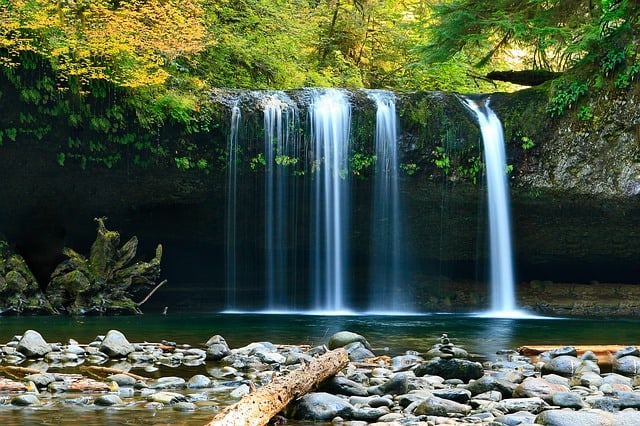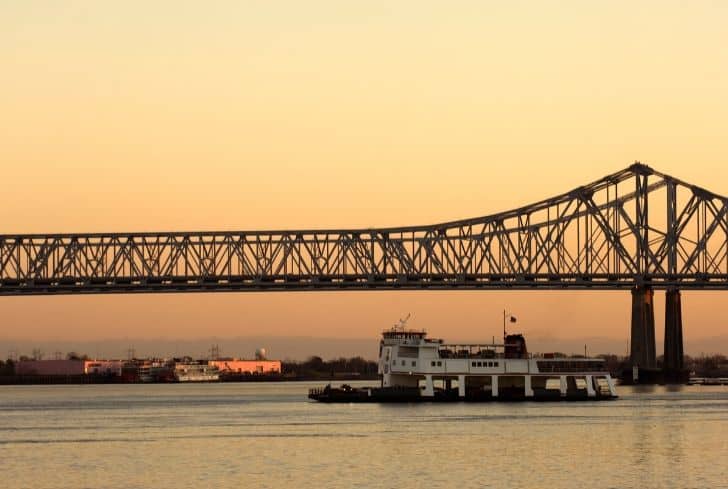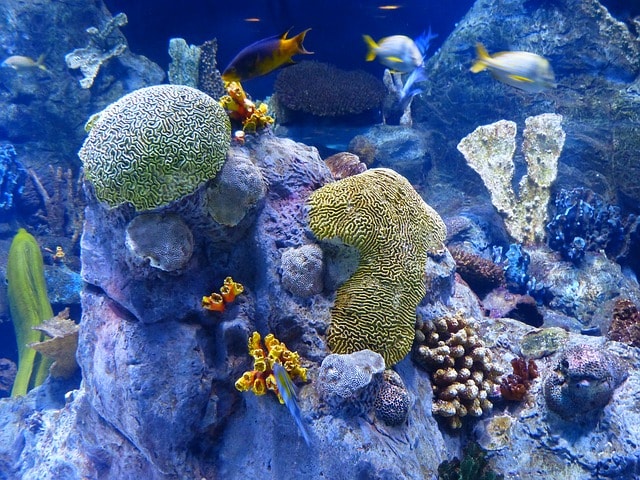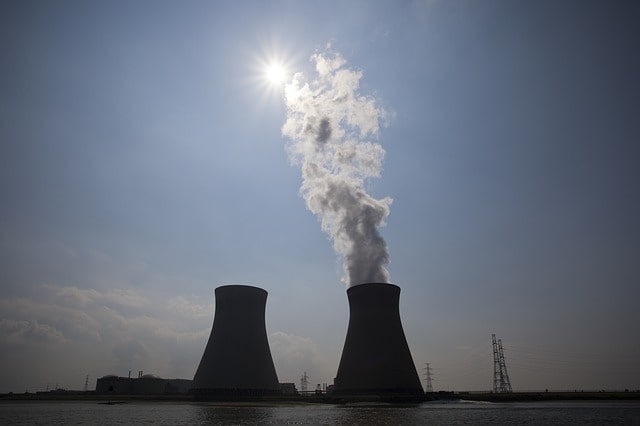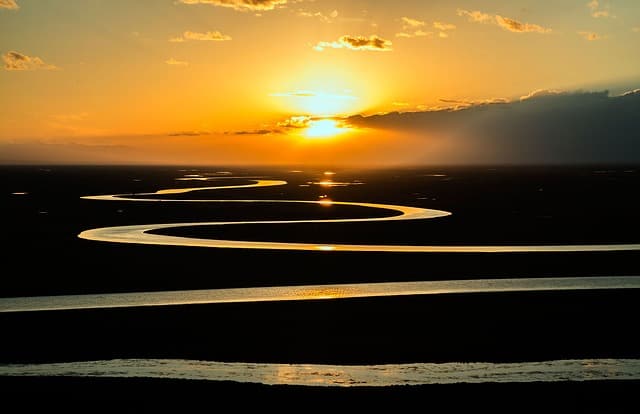Arctic Ocean: Climate, Islands, Depth, Location, Currents
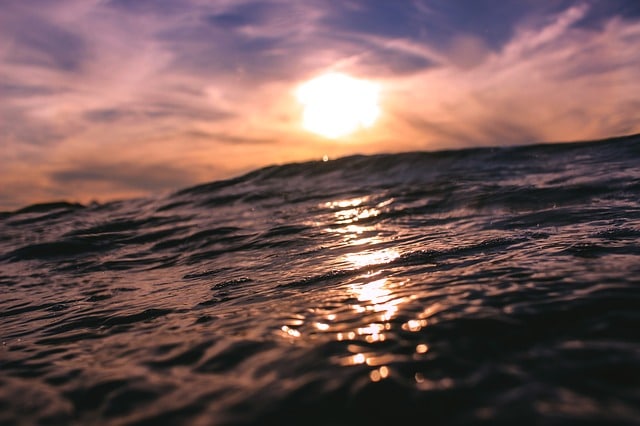
The Arctic Ocean is the shallowest and smallest ocean with a total area of approximately 13,986,000 square kilometers. It is located around the North Pole and is surrounded by some countries like Greenland, Alaska, Canada, Russia and Norway. The ocean is connected to the Pacific Ocean by the Bering Strait and the Atlantic Ocean by the Greenland Sea. The name “Arctic” comes from the Greek word “Arktos” which means bear, derived from the northern sky constellation in the sky of the ocean, “Ursa Minor” (Little Bear and “Ursa Major” (Great Bear).
It is believed that the origin of the Arctic ocean is in the Cenozoic Era, 65 million years ago. It was formed through the Seafloor Spreading in the lengthways of the Nansen-Gakkel Ridge. Unlike the Southern Ocean that surrounds an ice plate, the Arctic Ocean is surrounded by lands. It is one of the harshest environment in the world with more severe climate change than the Antarctic Ocean. However, millions of people live the Areas near the Arctic due to its richness in natural resources and even fossil fuels. Some facts about the climate, island, depth, location, and current will be discussed furtherly.
Climate
The climatic condition of Arctic Ocean is influenced by the solar radiation, and the periodic passage of atmosphere and river flows from the landmasses that surround the Ocean, bringing winds precipitation, and temperature. Generally, the climate of Arctic Ocean is categorized as long, cold winters and short, cool summers. The solar radiation is the major basis for the global and regional climatic condition.
However, solar radiation is influenced by latitudes and the variations of cloud cover. The higher the latitude, the less penetration of sunlight and the frequent variation of cloud cover, the significant variation of light penetration. Since the Arctic Ocean is in the higher latitude, it is subjected to a very cold condition with the presence of, ice, snow, and water. The availability of sunlight creates the four seasons of the Arctic ocean: winter (November through February), summer(around 21 of June), spring (March and April), and autumn, (September and October).
The winds that flow to the Arctic Ocean has an average range of 4-6 meters per second in all four seasons. However, stronger winds also occur especially in the North-Atlantic seas, Baffin Bay, and Bering and Chukchi Seas. The precipitation of Arctic Ocean falls as rain or snow, however, the basin receives very little amount with only less than 250 mm per year except some small regions which receive about 400 mm per year. During November and May, the average monthly precipitation is about 15 mm, and during July, August, and September, precipitation would rise to 20 to 30 mm.
In terms of temperature, the month of January and July receive the coldest and warmest temperature respectively. The summer temperature mainly influences the Arctic ocean temperature. It could experience a long period of continuous sunlight or long period of no sunlight. In winter, the temperature averages from −30 to −35 °C. In summer, the melting of sea ice has a temperature of 0 °C. The extra solar radiation is basically to melt the ice but not to rise the temperature.
Islands
The Arctic Ocean is besieged with islands which are mostly fragments from the North America, Europe, and Asia. Some of these islands are inhabited while others are not because of ice and snow cover. Many of the islands are situated in the border waters of the Northern Atlantic and Arctic Oceans at 60 degrees going to the north.
Some of the islands of Arctic Ocean are the Greenland (massive island situated between the Arctic and North Atlantic Ocean), Iceland, (defined by its unique landscape embedded with volcanoes, geysers, hot springs and lava fields), Faroe Islands (composed of 18 rocky and volcanic islands between the Iceland and Norway in the North Atlantic Ocean), Jan Mayen ( a volcanic island covered with glacier), Svalbard (One of the world’s northernmost region yet the most visited island in the Arctic region), North Pole (not considered an island but just a floating mass of ice), and the ATOW1996 (a small uninhabited island, approximately 10 meters length and 1 meter high.
The Arctic Ocean, although considered as the smallest ocean in the world is a home to the largest island (Greenland), uninhabited island (Devon Island), archipelago Arctic) , and coastal shelf (Siberian). The largest numbers of Arctic Island are part of the territories of Canada while other parts are covered by the continent of Northern Russia. The ten largest islands of Arctic are the Greenland (2,130,800 sq km), Baffin Island (507,451 sq km), Ellesmere Island (196,236 sq km), Banks Island (70,028 sq km), Devon Island (55,247 sq km), Severny Island (47,079 sq km), Axel Heiberg Island (43,178 sq km), Melville Island (42,149 sq km), Southampton Island (41,214 sq km), and Prince of Wales Island (33,339 sq km).
The principal arms of the Arctic Ocean are the Beaufort, Chukchi, East Siberian, Laptev, Kara, Barents, and Greenland seas and it extends 1,210 kilometers seaward from Siberia shelf. From the shelf, there are numerous Islands rises which are the Arctic Archipelago, Novaya Zemlya, the New Siberian Islands, and Wrangel Island.
Depth
Generally, the water depth of the Arctic ocean ranges from 1700 meters to 2500 meters depending on the amount of water that flows in and out of the Arctic Ocean from the different Oceans. Sometimes, depth would extend to more than 2500 meters. The recorded deepest point of Arctic Ocean is 5450 meters which is found in the Eurasian Basin.
Location
The Arctic Ocean is situated at 65.2482° N, 60.4621° W in the Arctic polar region in the central part of the Northern Hemisphere. It is surrounded by North America and Eurasia including the countries of Russia, Norway, Iceland, Greenland, Canada and the United States. The floor of the Arctic Ocean is divided by three submarine ridges which are the Alpha Ridge, Lomonosov Ridge, and the Arctic Mid-Oceanic Ridge. The Arctic Ocean occupies the whole region of North Pole.
Currents
There are two major currents in the Arctic Ocean, the Beaufort gyre, and the Transpolar Drift Stream. Arctic Ocean surface waters generally circulate clockwise moving from east to west around the polar ice cap. The Pacific Ocean brings cold waters to the Arctic Ocean through the Bering Strait. The waters are then mixed with the waters of the rivers and then flow to the Beaufort gyre where the strong wind causes the water to flow into a clockwise rotation.
However, when the wind is weak, the water will be brought out of the gyre and will flow into the North Atlantic Ocean. The water from the North Atlantic Ocean can go back again to the Arctic Ocean bringing warm and salty waters making it denser and consequently sinks below the Arctic Ocean.The increased salinity leads to the lack of movement in the deep waters of Arctic Ocean causing a stagnant pool of cold water to accumulate at the bottom of the Arctic basin.
Arctic current slowly swirls the water of Arctic basin that turns the Polar Ice Cap making a complete rotation every four years. On the other hand, the Transpolar Drift Stream carries the freshwater from the Laptev Sea and the East Siberian Sea to the Fram Strait. The Transpolar Drift Stream results to the mixing of the freshwaters towards Canada Basin in the Arctic waters.

